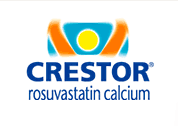Retail pharmacy executives have been waiting for that next big blockbuster drug for the past couple of years now. It has been an oft-repeated theme in drug chains' quarterly earnings reports since 2001, challenging top-line sales growth.
That should change this month, when the Food and Drug Administration puts its stamp on AstraZeneca's new cholesterol-lowering drug Crestor (rosuvastatin), which industry watchers believe could reach $3 billion in sales in its first two years on the market.
It was expected that by mid-August, the agency would follow the recommendation of its advisory committees, adding a new entry into a prescription drug class that is already the most lucrative in the business. Statin drugs currently generate some $12.8 billion and are growing at a rate of 11 percent, according to IMS Health--roughly $1 billion more than the next highest volume class of drugs, proton pump inhibitors.
And while there is little doubt that Crestor will make a fast and significant impact on the market, top competitors Pfizer with Lipitor (atorvastatin) and Merck with Zocor (simvastatin) both are expected to spend heavily to protect their share of the business. Together the two spent more than $172 million last year supporting their statin brands, according to published reports.
But AstraZeneca is no marketing slouch when it comes to making a big splash with a new drug. AstraZeneca spent $192 million introducing the gastrointestinal Nexium (esomeprazole magnesium) last year--far and away more money than any drug maker spent in support of any single brand last year. All indications are that AstraZeneca will dig deep to make a large dent on the business. Certainly, it has a story to get out in front of the consumer.
Again, Crestor will enter a segment that already includes three strong brands and one tough generic. Typically, doctors determine which of the statins to prescribe based on one of three criteria, according to Dr. Paul Thompson, chairman of the prevention committee for the American College of Cardiology and director of preventive cardiology at Hartford Hospital: potency, tolerability and price. AstraZeneca may be able to position Crestor as the better option on at least two of those three fronts.
"Lipitor is presently the most powerful [of the statins]," Thompson noted.
But that could change pending the FDA's decision.
According to a clinical study funded by AstraZeneca, Crestor lowered low-density lipoprotein between 46 percent to 55 percent versus a 37 percent to 51 percent drop in patients taking Lipitor; versus 28 percent to 46 percent for patients on Zocor; and 20 percent to 30 percent for Bristol-Myers Squibb's Pravachol (pravastatin). The differences were greatest when comparing the lower doses of each drug, which would seem to be another advantage for Crestor--physicians tend to weigh on the side of lower toxicity.
Pfizer is expected to combat that claim by highlighting Lipitor's safety record at all dosage levels--Crestor had to pull an application for an 80 mg dosage because of its toxicity, the story goes--and by emphasizing that Lipitor is the doctor's first choice in prescribing a cholesterol-lowering statin.
As for tolerability, Thompson ranked Pravachol and Lipitor at the top of the list of statins.
That leaves price--whether the drug is on the patient's formulary. And there is some belief that Crestor could become the favorite of managed care companies, if AstraZeneca positions it as the cheaper alternative to Lipitor and Zocor, as analysts expect they might. However, by Aug. 8 it was unclear what Crestor's price per pill might be. "That will be released when the product's approved," noted AstraZeneca senior public relations manager Gary Bruell.
A switch in the air?
Of course, by the time Crestor reaches its $3 billion potential, the statin market may have changed dramatically. Two out of today's three leading, statins will be facing generic competition, and it has been believed for some time now that statins may finally switch to OTC status by then.
Sales totaled $5.9 billion last year between Pravachol and Zocor, according to IMS Health. Both drugs will be facing generic competition by fourth quarter of 2005. Pravachol's patent expires in October of that year, with Zocor--the No. 2 top-selling pharmaceutical in 2002 with sales of $4.1 billion--going generic in December.
That could be a boon for both Crestor and Pfizer's reigning pharmaceutical champ Lipitor (atorvastatin), which isn't expected to come off patent protection until 2009.
That is, of course, unless the FDA, under commissioner McClellan's new leadership, breaks with tradition and decides to let consumers self treat high cholesterol, finally allowing a statin to switch from Rx to OTC status. Both Merck and Bristol-Myers Squibb have already petitioned FDA for switches of their respective drugs, Mevacor and Pravachol, and have been rejected. However, some believe both companies were close the last time around in the summer of 2000.
Indeed, the times may be changing, suggested Dr. Randy Juhl, a former chairman of the FDA's Nonprescription Drugs Advisory Committee and currently dean of the School of Pharmacy and vice chancellor at the University of Pittsburgh. "If you track over time the agency's response to allowing an over-the-counter indication [for statins], you can see that it has moved from being dead-set against it to being somewhat accepting of it," he said.
Juhl believes the industry might see a successful switch application for a statin drug pass within the next two years. Despite the recall of Bayer's Baycol (cerivastatin) in August 2001 for safety concerns, Juhl felt the safety profile of the remaining statins, at the lower doses, were comparable to the safety profile of medicines already available over-the-counter. "The real question here is, are we taking a step toward a toxic drug [switching to OTC]? And, the answer to that is no," he said.
And then there is the scenario in which a pair of drugs matched as a combination therapy could emerge among the statin drugs. A pair of combination drugs are expected to break into the statin ring as early as next year. Pfizer is hoping to combine Lipitor with its hypertension Norvasc (amlodipine besylate) medicine in a single tablet, and Merck and Schering-Plough are co-developing a Zocor/Zetia (ezetimebe) combo. Approved in October last year, Zetia also lowers cholesterol, but through a different mechanism than do statins.
However this is not a situation in which one and one would equal two, industry experts warn.
"The combo products are intriguing," Doug Long, vice president of industry relations at IMS Health told Drug Store News. "But it's hard to predict what they're going to do [on a sales basis]." For pharmacists, they may be replacing the sales volume of two pharmaceuticals with that of one medicine, and giving up one co-pay.
Still, not all combos are bad. "There are combo products that have done well, Advair Diskus is a good example of that," he said.
COPYRIGHT 2003 Reproduced with permission of the copyright holder. Further reproduction or distribution is prohibited without permission.
COPYRIGHT 2003 Gale Group




